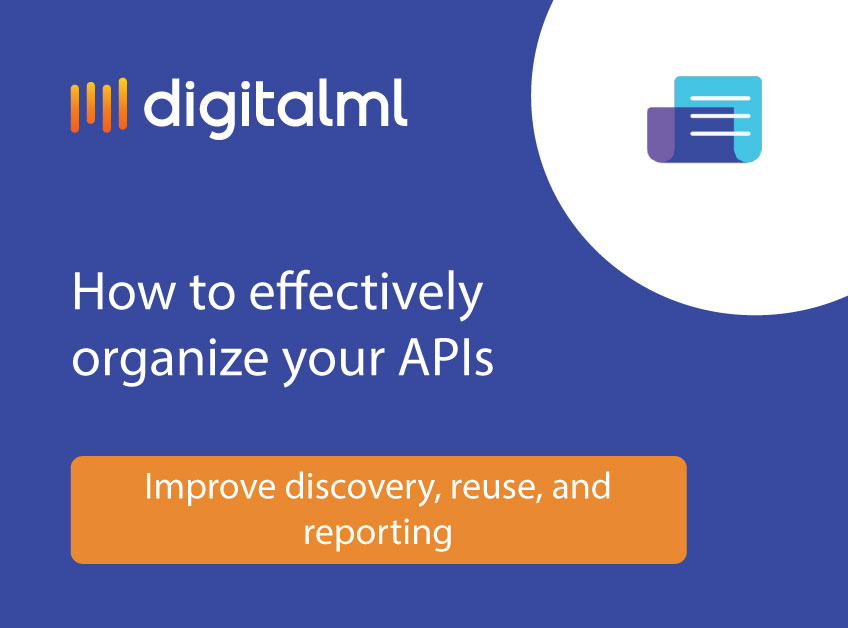Best API Catalog Tools | Busting 5 Common Myths
There are 5 common myths when it comes to API catalog tools. Overcome these to create a successful catalog that's a unified source of truth for all your APIs.
APIs are growing exponentially in enterprises as a way to connect systems, data, and easily expose core capabilities. Enterprises now have multiple API types and categories running on different environments. As a result, you’re likely realizing you need a good API catalog tool. Cataloging APIs well helps you capture and manage API sprawl to drive increased API adoption, while decreasing duplication, redundancy, and associated security risk. The best API catalogs also provide valuable transparency and insights into business capability coverage, governance and security compliance, and API maturity.
When considering the best API catalog tools, there are 5 common myths we see in enterprises. In this post, we’ll discuss each and the issues that these misconceptions cause (perpetuated by basic catalog tools), and teach you how they can be resolved by the right tool. Doing so ensures you can deliver greater API economy benefits efficiently.
5 Common Myths About API Catalog Tools
1. You need multiple catalogs: API catalog + SOAP Service catalog + Event Catalog
Myth: Our enterprise has many types of APIs (e.g. REST APIs, SOAP Services, Async Events, GraphQL), running across distributed environments. Therefore we need a separate API catalog, SOAP service repository, event portal, and so on.
Issue: Separate catalogs mean:
- You have no unified view and therefore no single source of truth for every API in the landscape, and no overall understanding of coverage and maturity.
- There’s no standardization between each catalog and the assets within it.
- It’s hard to drive successful API adoption; consumers are having to go to multiple catalogs to discover and reuse APIs.
- An increased risk of duplication and shadow and zombie APIs.
Resolution: With our ignite platform, you can create a holistic catalog for all API types, across all repos, pipelines, and runtimes. ignite gives you one place to capture, manage, govern, discover, reuse and deploy from.
Benefit of busting this myth:
You can create a single view of all your APIs, Service, and Events – with standardization and improved discovery and reuse. Understand your entire API landscape; what business capabilities are being supported, where APIs are running and who’s consuming them and how mature, compliant, and well-governed your APIs are Here’s a quick video on ignite’s Holistic API Catalog tool:
2. Only developers use the catalog
Myth: API catalog tools are for provider and consumer developers to use. The providers list their APIs, the consumers come in and discover (and subscribe) to the APIs they want to use for their applications.
Issue: Thinking of a supply chain analogy; you’d want your storefront separate from but connected to your distribution warehouse. The storefront is your API consumption view (e.g. Consumer Portal or API Marketplace) and should enable tailored experiences for consumers and good provider/consumer collaboration. But the warehouse, i.e. the API catalog needs to enable a wider range of stakeholders who want to interact with your APIs. These include the API platform team, API product managers and business stakeholders, IT stakeholders, and risk and compliance teams.
Resolution: ignite is designed to enable all roles in your integration ecosystem. Different roles can interact with different views of the platform, for example:
- business users interact with an abstracted Design so they can clearly understand its functions
- provider developers interact with a technical specification so they can produce a great API
- leadership and analysts can find out catalog coverage against your business capability model. Compliance the same against governance and security rules.
- consumer developers can browse ignite’s Consumer Portal to easily discover, evaluate, and integrate with your gold standard APIs that have been promoted to these views.
Benefit of busting this myth:
Multiple roles can interact with your API catalog. Collaborative innovation with expertise across the organization is unlocked, for consumer-centric products and services.
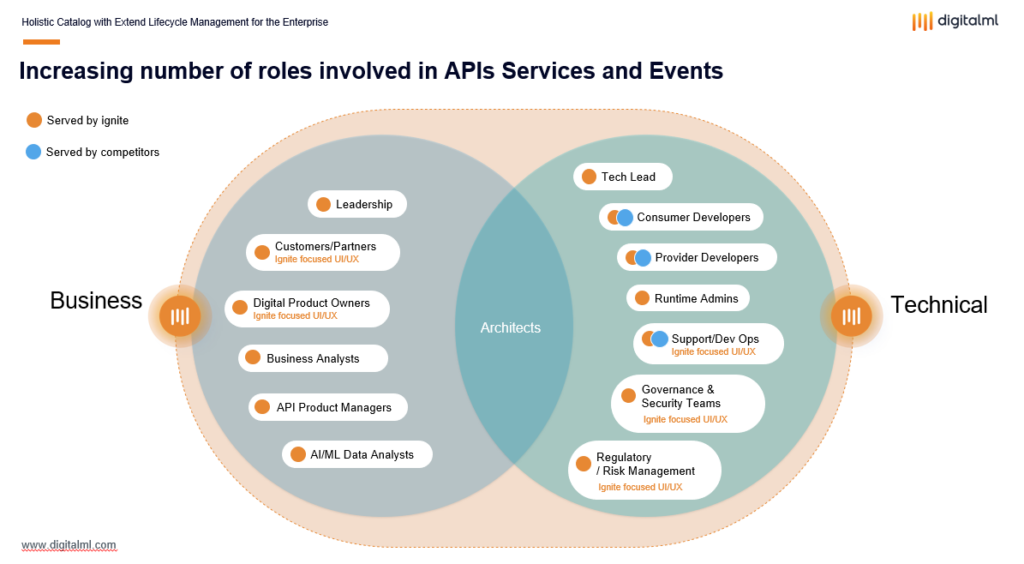
3. The catalog is part of a developer portal (also known as an API portal)
Myth: API catalogs are a runtime thing, tied to a gateway. They’re provided as part of an API management platform or developer portal offering.
Issue: You can only catalog external public APIs if it’s part of a developer portal. But in reality you likely need to catalog all types of APIs (internal, system, point to point, composite, 3rd party/partner and external). With runtime catalog tools, the system of record (SOR) for the API is the code. Only developers (and often only the API owner themselves) can find and understand the valuable information and business logic on what the API does and how it works.
This also ties you to the implementation code for the API, making your enterprise less flexible and responsive.
Resolution: ignite sits upstream of, but seamlessly connected to, repos, CI/CD pipelines, and runtime platforms. This abstracted approach provides you with a technology agnostic catalog. This means you can catalog, manage, discover and reuse all API types (and all interface styles, as we discussed in misconception #1).
With ignite, the system of record is held as the abstracted Design (coupled to the technical details in the Specification), so you’re not locked into vendors and you can provide the business/IT appropriate views we discussed in misconception #2.
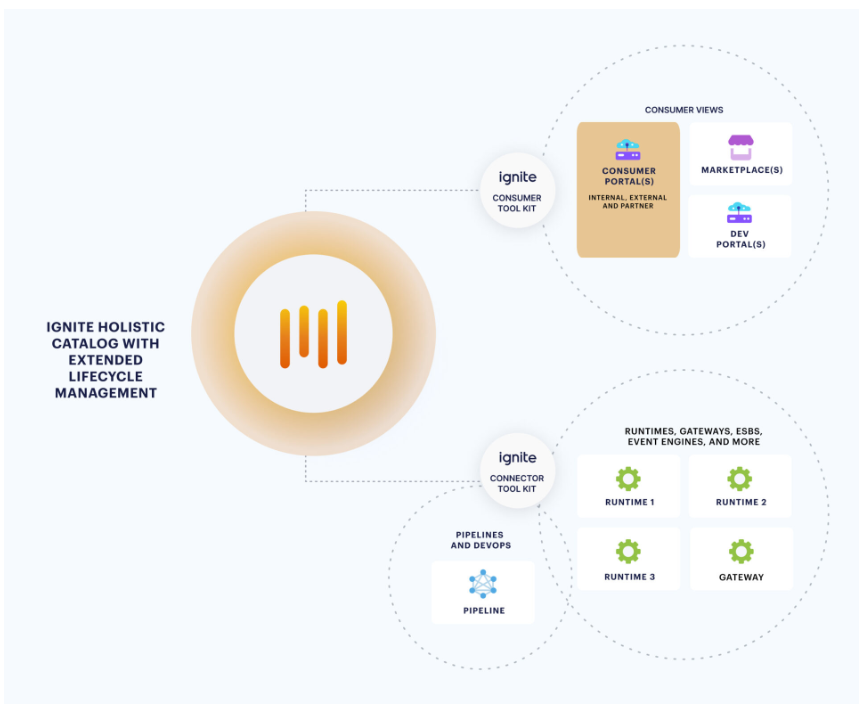
Benefit of busting this myth:
Your APIs, Services and Events are managed in an abstracted way; futureproofed and with no vendor lock-in.
4. It’s a static library of APIs
Myth: API catalog tools aren’t active and connected to other ecosystem components. They are essentially a list of APIs, and need to be manually updated and maintained.
Issue: The catalog becomes quickly outdated, and no one wants to spend valuable time keeping it updated and maintaining it. Ultimately, it doesn’t get adoption and isn’t a reliable source of truth for your API landscape.
Resolution: ignite integrates with your existing architecture, capturing all APIs across all lifecycle states. ignite’s Holistic Catalog integrates with:
- ignite’s own optimized API lifecycle management
- Developer Portals, API Marketplaces, and ignite’s API Consumer Portal
- Repos and pipelines
- API management platforms and other runtime platforms
- Other ecosystem apps e.g. ticketing systems and workflow management platforms
Benefit of busting this myth:
You always have an accurate view of your entire API ecosystem. Your catalog becomes the beating heart of your IT infrastructure.
5. It’s separate from the API lifecycle
Misconception: The catalog and development lifeycle are two entities, and one tool cannot support both. Developers are manually building APIs, and then publishing them to the catalog once they’re complete and deployed.
Issue: It’s hard to promote top-down, domain driven API development, and/or support standardized and well-governed bottom-up API development. While needed, you’re unable to easily catalog all APIs across all lifecycle states and versions, and manage changes/updates and reuse. The resolutions we discussed in all previous sections also become blocked.
Fundamentally, the catalog isn’t growing with reliable, compliant, secure, and reusable APIs, Services, Events and Messages.
Resolution: ignite provides a holistic catalog and extended lifecycle management. We’re the world’s most comprehensive platform for creating and managing composable business building blocks reliably exposed as APIs, Services, Events. Meet developers where they are to create frictionless workflows for your APIs, while also supporting domain driven API design in a flexible and balanced way.
Benefit of beating this misconception:
You gain competitive advantage through a robust portfolio of reliable APIs, Services, and Events unlocking functionality: faster time to market, better consumer experiences, and digital responsiveness.
Here’s an example workflow from a catalog that’s connected to lifecycle management as well as other ecosystem components such as a developer portal:
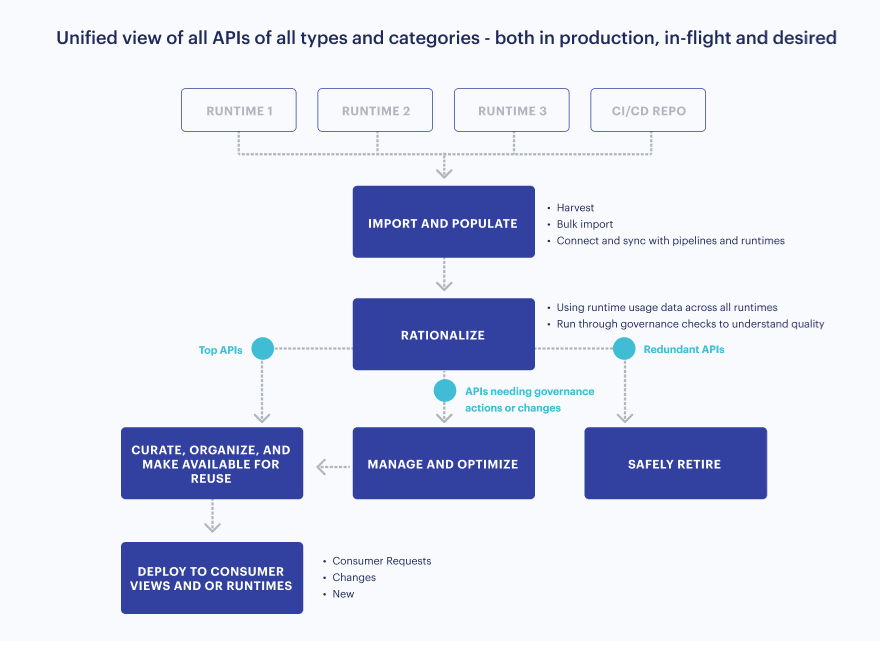
ignite: the best API catalog tool for large enterprises
Learn more about ignite’s Holistic Catalog and why it’s the best API catalog tool to overcome these common misconceptions in our free whitepaper:
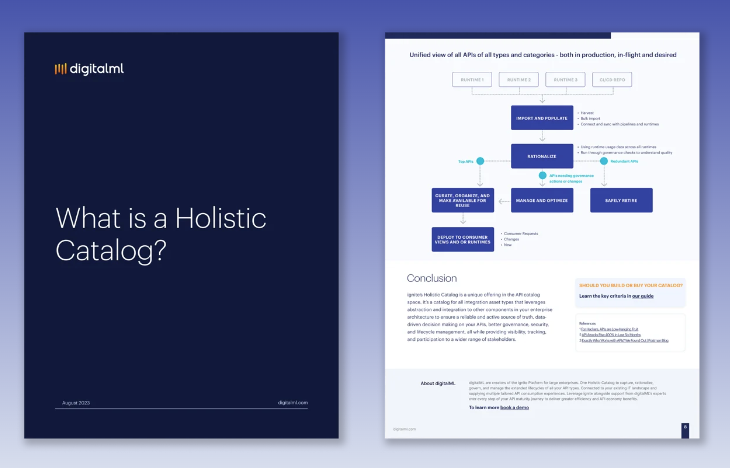
Differentiate Your Digital Enterprise Now
Learn how it can help your enterprise accelerate digital transformation





